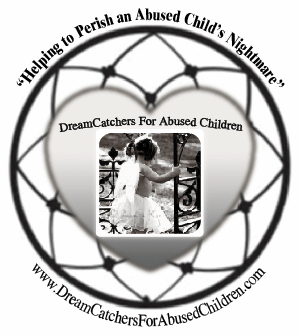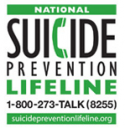List of RAPE MYTHS
Sociology of Rape
University of Minnesota Duluth
Rape myths are beliefs about sexual assault that wrought with problems. Some myths are just completely and blatantly untrue. What often happens is that beliefs surrounding circumstances, situations, and characteristics of individuals connected to rape are applied to all cases and situations uncritically. Myths exist for many historic reasons which include inherited structural conditions, gender role expectations, and the fundamental exercise of power in a patriarchal society. The best way to approach rape myths are to confront them honestly and frankly. Don’t deny their existence and don’t dismiss one ungrounded statement with another.
Confronting rape myths sociologically means looking at the data and reevaluating knowledge in the face of social facts. What follows are a list of rape myths and the facts that bring those rape conceptions into question. They are not always conclusive but provide the ground work for continued research.
Myth: Rape is sex.
Fact: Rape is experienced by the victims as an act of violence. It is a life-threatening experience. One out of every eight adult women has been a victim of forcible rape. (National Victim Center and Crime Victims Research and Treatment Center, 1992) While sexual attraction may be influential, power, control and anger are the primary motives. Most rapists have access to a sexual partner. Gratification comes from gaining power and control and discharging anger. This gratification is only temporary, so the rapist seeks another victim.
Myth: Women incite men to rape.
Fact: Research has found that the vast majority of rapes are planned. Rape is the responsibility of the rapist alone. Women, children and men of every age, physical type and demeanor are raped. Opportunity is the most important factor determining when a given rapist will rape.
Myth: There is a “right way” to respond to a rape situation.
Fact:Since rape is life-threatening and each rapist has his own pattern, the best thing a victim can do is follow her instincts and observe any cues from the rapist. If the victim escapes alive she has done the right thing.
Myth:A victim should be discouraged from dwelling on the rape. She should “forget it”.
Fact: This advice generally comes from people who are more concerned with their own feelings than the victim’s. All victims should be offered the opportunity to talk about the assault with those personally close to them and knowledgeable professionals. Victims who are not allowed to talk about the rape have a much more difficult time recovering form it.
Myth:Support from family members is essential to the victim’s recovery.
Fact: A Victim Services study found that emotional and practical support offered by family and friends does not necessarily speed the recovery of rape victims. However, when the people that a victim relies on behave in un supportive or negative ways, the victim faces a longer, more difficult recovery process. These negative behaviors include worrying more about oneself that the victim, blaming the victim, withdrawing from the victim or behaving in a hostile manner, and attaching a stigma to the rape and demanding secrecy from the victim.
Myth:Rape trauma syndrome is a transient problem. Most healthy people will return to a normal state of functioning within a year.
Fact: Surviving a rape can lead a woman to a better understanding of her own strength, but rape is a life changing experience. Rape has a devastating effect on the mental health of victims, with nearly one-third (31%) of all rape victims developing Rape-related Post-traumatic Stress Disorder (RR-PTSD) some time in their lifetimes. More than one in ten rape victims currently suffer from RR-PTSD. (National Victim Center and Crime Victims Research and Treatment Center)
Myth: Rapists are non-white. Rapists are lower class. Rapists are “Criminal types”.
Fact: Rapists that fit the myth are more likely to be prosecuted but a rapist can be anyone: doctor, policeman, clergyman, social worker or corporate president.
Myth: Men can’t be raped.
Fact: There were approximately 20,000 sexual assaults of males ages 12 and over in the United States in 1991. (Bureau of Justice statistics, 1992)
Myth: Incest is rare.
Fact: Incest is common and happens in every community. An estimated 77% of reported sexual abusers are parents (57% of the total being natural parents), 16% are other relatives, and 6% are non-related. In addition, males are reported to be the abusers in 60 to 95% of cases. (Thoringer, School Psychology Review, 17 (4):614-636)
Myth: Sexual assaults are rare deviations and affect few people. After all, no one I know has been raped.
Fact: Sexual assaults are very common. Most likely, someone close to you has been profoundly affected by sexual assault. Not only are victims reluctant to discuss their assaults but many succeed in totally blocking the assault from conscious memory. However, the trauma remains and may come to the surface at another crisis or when the opportunity to discuss it with a sympathetic person arises. An estimated 155,000 women were raped each year between 1973 and 1987. (U.S. Department of Justice, 1991)
Myth: Women often make false reports of rape.
Fact: According to FBI crime statistics, during the 1990s around 8 percent. The “unfounded” rate, or percentage of complaints determined through investigation to be false, is higher for forcible rape than for any other Index crime. Eight percent of forcible rape complaints in 1996 were “unfounded,” while the average for all Index crimes was 2 percent.
Myth: You can tell a rapist by the way he looks.
Fact: Rapists are not physically identifiable. They may appear friendly, normal, and non-threatening. Many are young, married and have children. Rapist types and traits however can be categorized.
Myth: Women fantasize about being raped.
Fact: No woman fantasizes about being raped. Fantasies about aggressive sex may be controlled and turned off if they become threatening. In rape, the victim is unable to control the violence and stop it.
Myth: A man can’t rape his wife.
Fact: Many states now have laws against rape in marriage. The idea that a man can’t rape his wife suggests married women do not have the same right to safety as do unmarried women. Most battered women have experienced some form of sexual abuse within their marriage. It is also known that estranged or ex-spouses sometimes use rape as a form of retaliation.
Myth: Only “bad” women get raped.
Fact: No other crime victim is looked upon with the degree of suspicion and doubt as a victim of rape. Although there are numerous reasons why society has cast blame on the victims of rape, a major reason found in studies is that of a feeling of self protection. If one believes that the victim was responsible because she put herself in an unsafe position, such as being out late at night, drinking alcohol, dressing in a certain way, or “leading on” the rapist, then we are able to feel safer because “we wouldn’t do those things.” But, the basic fact remains that without consent, no means no, no matter what the situation or circumstances.
Myth: Rape is just unwanted sex and isn’t really a violent crime.
Fact: Rape is a lot more than an unwanted sex act, it is a violent crime. Many rapists carry a weapon and threaten the victim with violence or death.
Myth: Rape only occurs outside and at night.
Fact: Rape can and does occur anytime and anyplace. Many rapes occur during the day and in the victims’ homes.
Myth: Sexual assault is an impulsive, spontaneous act.
Fact: Most rapes are carefully planned by the rapist. A rapist will rape again and again, usually in the same area of town and in the same way.
Myth: Sexual assault usually occurs between strangers.
Fact: By some estimates, over 70% of rape victims know their attackers. The rapist may be a relative, friend, co-worker, date or other acquaintance.
Myth: Rape only happens to young attractive women.
Fact: Rape can and does strike anyone at anytime. Age, social class, ethnic group and has no bearing on the person a rapist chooses to attack. Research data clearly proves that a way a woman dresses and / or acts does not influence the rapists choice of victims. His decision to rape is based on how easily he perceives his target can be intimidated. Rapists are looking for available and vulnerable targets.
Statistics were obtained from various sources including the study Rape in America, 1992, National Victim Center, The Federal Bureau of Investigations and the National Crime Survey.
Myth: Rape is a crime of passion.
Fact: Rape is an act of VIOLENCE, not passion. it is an attempt to hurt and humiliate, using sex as the weapon.
Myth: Most rapes occur as a “spur of the moment” act in a dark alley by a stranger.
Fact: Rape often occurs in one’s home – be it apartment, house or dormitory. Very often the rapist is known by the victim in some way and the rape is carefully planned.
Myth:Most rapists only rape one time.
FACT Most rapists rape again, and again, and again – until caught.
Myth: Only certain kinds of people get raped. It cannot happen to me.
FACT Rapists act without considering their victim’s physical appearance, dress, age, race, gender, or social status. Assailants seek out victims who they perceive to be vulnerable. The Orange County Rape Crisis Center has worked with victims from infancy to ninety-two years of age and from all racial and socioeconomic backgrounds.
Myth: Only women and gay men get raped.
FACT The vast majority of male rape victims, as well as their rapists, are heterosexual.Male rape victims now represent 8% of the primary victims served by the Orange County Rape Crisis Center. Rapists are motivated by the desire to have power and control over another person, not by sexual attraction. Male rape is not homosexual rape. Many male victims do not report the assault because they fear further humiliation.
Myth: Rape is an impulsive, uncontrollable act of sexual gratification. Most rape are spontaneous acts of passion where the assailant cannot control him/herself.
FACT Rape is a premeditated act of violence, not a spontaneous act of passion. 71% of rapes are planned in advance. 60% of convicted rapists were married or had regular sexual partners at the time of the assault. Men can control their sexual impulses. The vast majority of rapists are motivated by power, anger, and control, not sexual gratification.
Myth: No woman or man can be raped against her or his will. Any person could prevent rape if he or she really wanted to.
FACT In 1991, 14% of the rapes reported to the Orange County Rape Crisis Center involved the use of a weapon. 74% involved physical force and/or threats of force. Women are often physically weaker than men and are not taught to defend themselves or to be physically aggressive. Furthermore, some women are not willing to hurt another person, especially if the offender is someone they know.
Myth: Most rapes occur when people are out alone at night. If people stay at home, then they will be safer.
FACT 44% of rapes reported to the Orange County Rape Crisis Center in 1991 occurred in the victim’s home.
Myth: Rapists are strangers. If people avoid strangers, then they will not be raped.
FACT In 60% of the rapes reported to the Orange County Rape Crisis Center in 1991, the rapist was known to the victim. 7% of the assailants were family members of the victim. These statistics reflect only reported rapes. Assaults by assailants the victim knows are often not reported so the statistics do not reflect the actual numbers of acquaintance rapes.
Myth: If the assailant, victim, or both are drunk, the assailant cannot be charged with rape.
FACT Forcing sex on someone who is too drunk to give consent is second degree rape in North Carolina. [It carries a prison sentence of up to 17 years.] Rape is a crime. People who commit crimes while under the influence of alcohol or drugs are not considered free from guilt.
Myth: Most rapes involve black men and white women.
FACT 77% of the rapes reported to the Orange County Rape Crisis Center in 1991 involved persons of the same race.
Myth: Rapists are abnormal perverts; only sick or insane men are rapists.
FACT In a study of 1300 convicted offenders, few were diagnosed as mentally or emotionally ill. Most were well-adjusted but had a greater tendency to express their anger through violence and rage.
Myth: Rape is a minor crime affecting only a few women.
FACT It is estimated that 1 in 8 women will be raped in her lifetime. Because of low reporting rates, it is not known how many adult men are assaulted. It is also estimated that 1 out of every 4 girls, and 1 out of every 8 boys are sexually assaulted in some way before they reach adulthood. Rape is the most frequently committed violent crime in this country.
Myth: Women frequently cry rape; false reporting of rape is common.
FACT The FBI reports that only 2% of rapes reports are given falsely. This is the same report rate for other felonies.
Myth: Most rapes occur on the street, by strangers, or by a few crazy men.
FACT Over 50% of reported rapes occur in the home. 80% of sexual assaults reported by college age women and adult women were perpetrated by close friends or family members. There is no common profile of a rapist. Rapes are committed by people from all economic levels, all races, all occupations. A rapist can be your doctor, your boss, your clergyman, your superintendent, your partner, your lover, your friend or your date.
Myth: You cannot be assaulted against your will.
FACT Assailants overpower their victims with the threat of violence or with actual violence. Especially in cases of acquaintance rape or incest, an assailant often uses the victim’s trust in him to isolate her.
Myth: Women secretly enjoy being raped.
FACT No woman/ man/ child enjoys being raped. It is a brutal intrusion on the mind, body and spirit that can have lasting trauma.
Myth: It is impossible for a husband to sexually assault his wife.
FACT Regardless of marital or social relationship, if a woman does not consent to sexual activity, she is being sexually assaulted. In fact, 14% of women are victims of rape committed by their husband.
Myth: If a person doesn’t “fight back” she/he wasn’t really raped.
FACT Rape is potentially life-threatening. Whatever a person does to survive the assault is the appropriate action.
Myth: A person who has really been assaulted will be hysterical.
FACT: Survivors exhibit a spectrum of emotional responses to assault: calm, hysteria, laughter, anger, apathy, shock. Each survivor copes with the trauma of the assault in a different way.
Myth: Women “ask for it” by their dress or actions.
FACT Rapists look for victims they perceive as vulnerable, not women who dress in a particular way. Assuming that women provoke attacks by where they are or the way they dress is victim-blaming. No person, whatever their behaviour, “deserves” to be raped.
Myth: Women “cry” rape.
FACT Only two percent of reported rape and related sex offences are false (which is approximately the same rate of false reports for other crimes). Although many cases are dropped because of insufficient evidence for conviction, this should not be confused with false reporting.
Myth: Gang rape is rare.
FACT: In 43% of all reported cases, more than one assailant was involved.
Myth: Women who are drunk are willing to engage in any kind of sexual activity.
FACT The fact that a woman has been drinking does not imply consent. Alcohol and drugs can render a woman incapable of consent.
Myth: Only young, pretty women are assaulted.
FACT Survivors range in age from infancy to old age, and their appearance is seldom a consideration. Assailants often choose victims who seem most vulnerable to attack: old persons, children, physically or emotionally disabled persons, substance abusers and street persons. Men are also attacked.
Myth: It is impossible to sexually assault a man.
FACT Men fall victim for the same reasons as women: they are overwhelmed by threats or acts of physical and emotional violence. Also, most sexual assaults that involve a male victim are gang assaults.
Myth: As long as children remember to stay away from strangers, they are in no danger of being assaulted.
FACT Sadly, children are usually assaulted by acquaintances; a family member or other caretaking adult. Children are usually coerced into sexual activity by their assailant, and are manipulated into silence by the assailant’s threats and/or promises, as well as their own feelings of guilt.
Myth: Most rapes involve black men raping white women.
FACT The majority of rapes are same race; womewhere around 3 to 4% are not same race.

The University of Minnesota is an equal opportunity educator and employer.


























![Validate my RSS feed [Valid RSS]](http://dreamcatchersforabusedchildren.com/wp-content/uploads/2009/10/valid-rss.png)












